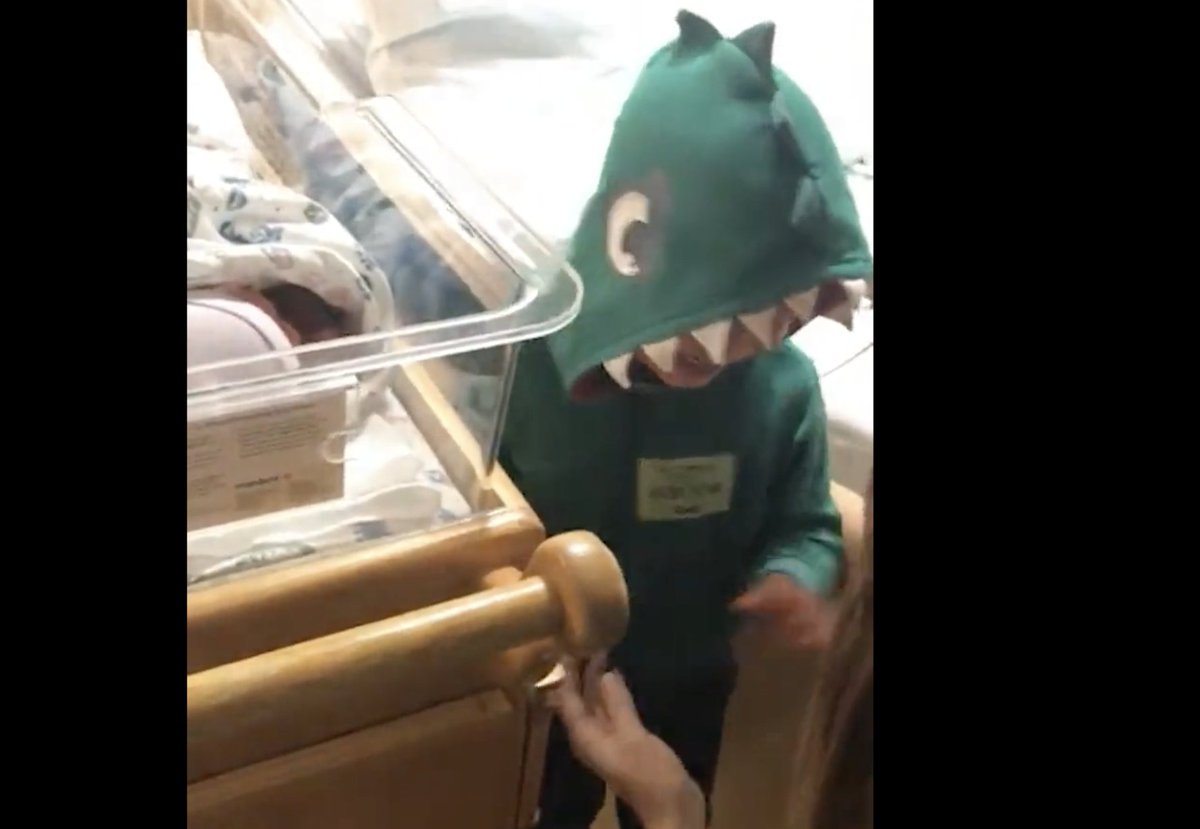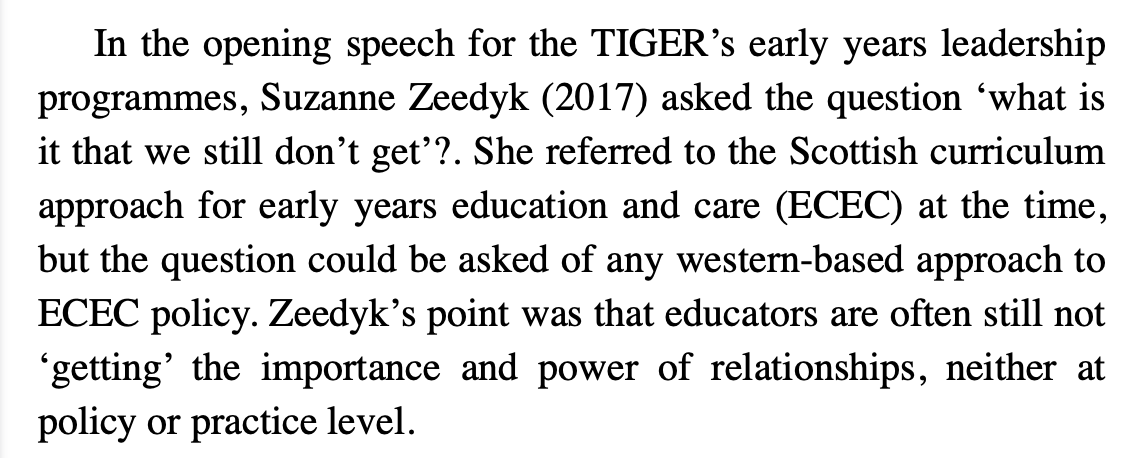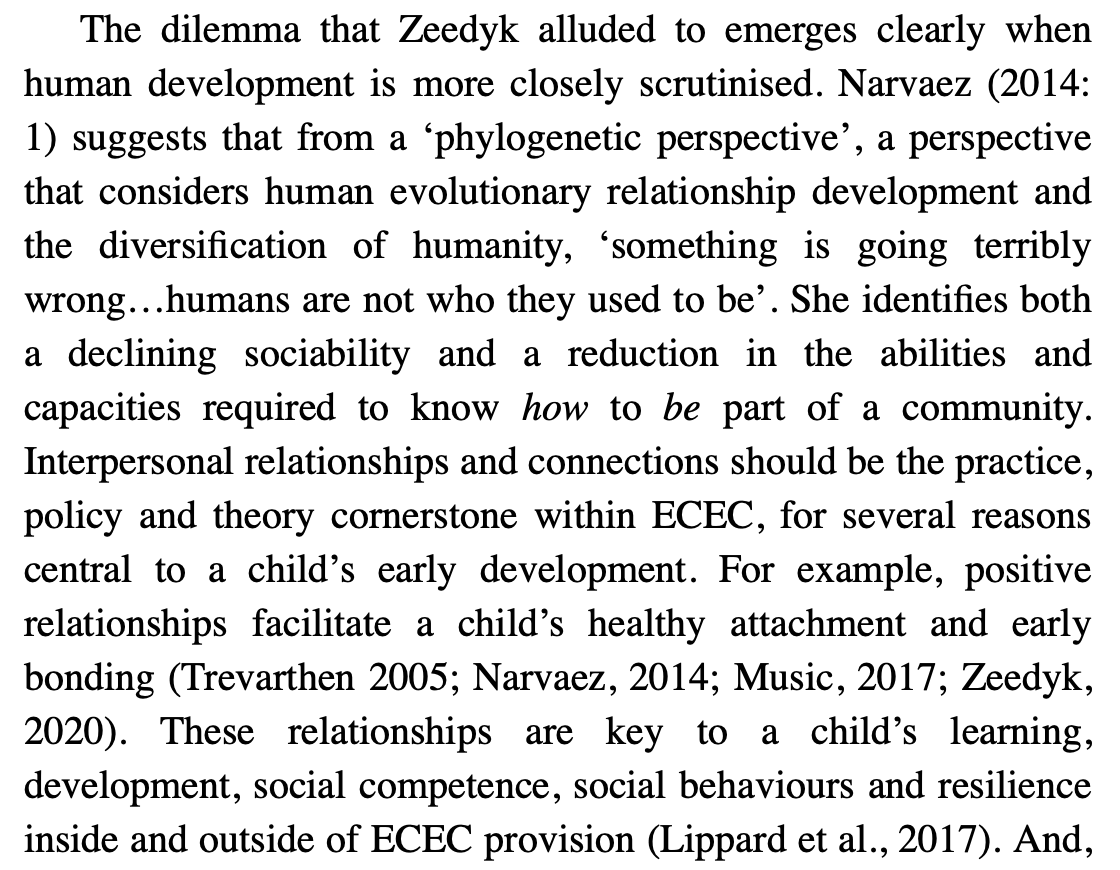Let's begin 2023 with a #BabyThread (well, really a #ToddlerThread) that helps us make sense of anticipation - and what helps when we are struggling. This little guy & his parents have lots to teach us about that.
(Thank you @danwuori for t brill posts you offer to work with.)
(Thank you @danwuori for t brill posts you offer to work with.)
https://twitter.com/DanWuori/status/1608971642310656002
2. He walks into the hospital room. Let's think about that. He's probably never been in one before. Lots of weird furniture, no schema for how such a room looks to help him make sense of the layout. And so he can't find the particular thing he's looking for: His new brother. 

3. Isn't it brilliant he knows he can ask for help? "Mommy, where's Frankie?" (I think that's t name?) That means he already HAS a name for t baby. He's been able to anticipate, fantasise, dream of the new baby to come. His hopes & expectations are high! He's been waiting months! 

4. And look how attuned mom is able to be. One hand on his back, another reaching for his hand, able to bend to his level. Her voice is soft. "He's right here." It is astounding that a woman who has just given birth can be so attentive. Not all births will have permitted this. 

5. Dad helps too: "That's your brother." Everything happening shows 2 parents who are crafting a family, who are already shaping relationships. I would guess they have been doing that for a long time before this big moment. They helped their son adjust to, anticipate t future. 

6. And here he is!!! The long-awaited baby brother. LOOK at the smile on his face. It is immediate. It is a smile of greeting & delight. "So THIS is what you look like. I've waited soooo long to meet you." 

7. "Wow." Our little boy is in a state of awe.
Dacher Keltner has new book out about exactly this state: Awe. He talks about how 'everyday wonder' transforms our body & brain. The wondrous, anticipated thing has happened: His baby brother is finally here. penguinrandomhouse.com/books/622175/a…
Dacher Keltner has new book out about exactly this state: Awe. He talks about how 'everyday wonder' transforms our body & brain. The wondrous, anticipated thing has happened: His baby brother is finally here. penguinrandomhouse.com/books/622175/a…

8. In that state of anticipation fulfilled, it is not surprising he gets overwhelmed. He wants to say something to his new baby brother: "You're my best friend forever." But he can barely get t words out, because his body is coping with feelings that are toooo big. 

9. Let me call attention to what mom does. It is so subtle & 'obvious' we might discount it. I don't want us to do that. She moves in close. She keeps her hands near him. She's quiet. She doesn't make a big emotion even bigger. She offers calm,respite, help. That's 'containment'. 

10. Sarah Ockwell-Smith @TheBabyExpert is one of people working to help parents, early years staff & t public understand what 'containment' is and why young children needs lots of it - from us, the grown-ups. Here's one of her videos on it.
11. Look at his face. Look at the apparent distress as he turns to his mom, seeking to share these big feelings. He doesn't need them taken away. He just needs some help in carrying them. Bless these parents. He has learned they will be there to help when he needs emotional help. 

12. I want to say something serious in the midst of t joy. Not all children get a chance to learn what this little one has. Not all children learn their parents will 'be there' to help. That's t point of Attachment. About 50% of t population learn their parents can't always hear.
13. I don't know these parents, but I wd be willing to guess they think their comfort is just 'obvious'. They may not think its special. What I am trying to say is that it IS special. Their consistent attuned response? It will build a robust inner teddy bear. That's Attachment. 

14. I spend lots of time thinking how I can help us all to understnd Attachmnt. That's why I write abt it. (I appreciated this review frm Love & Loss: "straightforward introduction".) Sooo many of us will have had attachment triggers during this holiday. loveandloss.co.uk/book-reviews-o… 

15. Because here's the pay-off of Secure Attachment, in the story playing out in front of us: This little lad can collapse into his mother's comforting arms when he's overwhelmed. He can name his feelings: "I'm really excited." He just needs some help with that excitement... 

16. As the video ends, there's his mum, waiting with open arms to receive him. She lets him step in. That builds TRUST. He can seek what he needs. And later in life? He will be better able to take care of himself emotionally. He will have a strong inner teddy bear. 

17. Being a parent is hard, exhausting. Children constantly need you emotionally - because they can't yet manage their own emotions. I think understanding how one can be triggered by children's needs lets you hv compassion for yourself. This video helps. vimeo.com/145329119
18. About 50% of us don't have secure attachment patterns. Our parents couldn't help us craft them. So that means part of the journey of adulthood is learning how to meet your own needs and how to seek help, how to trust it when it is offered. It is a journey worth taking.
19/end. I end with my thanks to these 2 parents, who allowed this video of a precious moment to be posted on social media. I hope my comments help you realise your brilliantness. Enjoy your boys.
And thanks to all of you who keep encouraging my #BabyThread(s). Happy New Year.
And thanks to all of you who keep encouraging my #BabyThread(s). Happy New Year.
A thread on attachment you might like, colleagues: @donnaadamsx @meljanestuart1 @JANEOROURKE @Philippa_Perry @balgobinthinks @Bowlby_Centre @SimonPartridge @margl43 @SeventhSon76 @kdenvir @briancar1983 @Lorrain05617625 @LoreenPardoe @PiersCross1 @yvonnestanley21 @carajay118
• • •
Missing some Tweet in this thread? You can try to
force a refresh





















